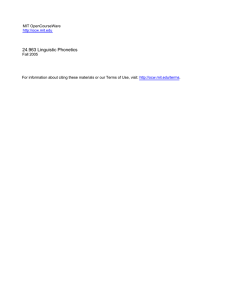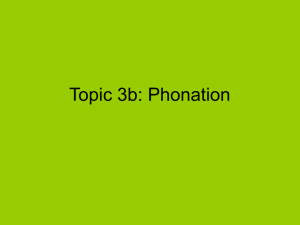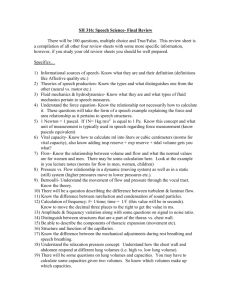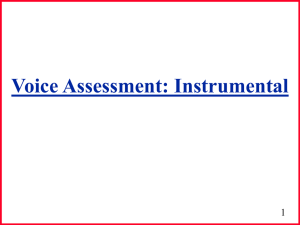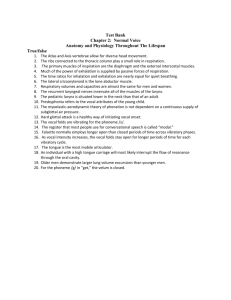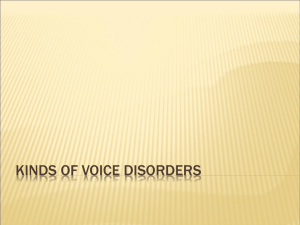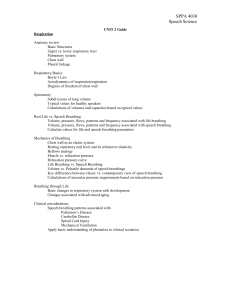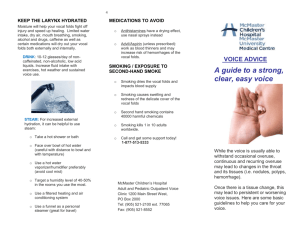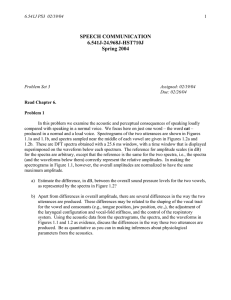SPPA 601: Advanced Speech and Hearing Science
advertisement
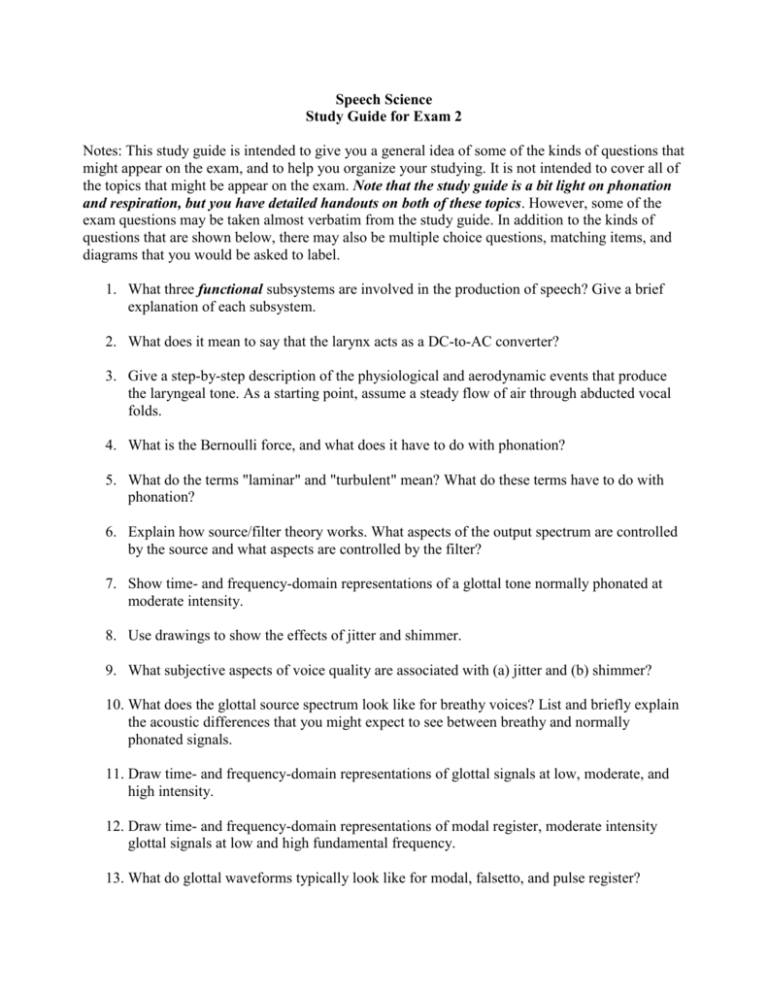
Speech Science Study Guide for Exam 2 Notes: This study guide is intended to give you a general idea of some of the kinds of questions that might appear on the exam, and to help you organize your studying. It is not intended to cover all of the topics that might be appear on the exam. Note that the study guide is a bit light on phonation and respiration, but you have detailed handouts on both of these topics. However, some of the exam questions may be taken almost verbatim from the study guide. In addition to the kinds of questions that are shown below, there may also be multiple choice questions, matching items, and diagrams that you would be asked to label. 1. What three functional subsystems are involved in the production of speech? Give a brief explanation of each subsystem. 2. What does it mean to say that the larynx acts as a DC-to-AC converter? 3. Give a step-by-step description of the physiological and aerodynamic events that produce the laryngeal tone. As a starting point, assume a steady flow of air through abducted vocal folds. 4. What is the Bernoulli force, and what does it have to do with phonation? 5. What do the terms "laminar" and "turbulent" mean? What do these terms have to do with phonation? 6. Explain how source/filter theory works. What aspects of the output spectrum are controlled by the source and what aspects are controlled by the filter? 7. Show time- and frequency-domain representations of a glottal tone normally phonated at moderate intensity. 8. Use drawings to show the effects of jitter and shimmer. 9. What subjective aspects of voice quality are associated with (a) jitter and (b) shimmer? 10. What does the glottal source spectrum look like for breathy voices? List and briefly explain the acoustic differences that you might expect to see between breathy and normally phonated signals. 11. Draw time- and frequency-domain representations of glottal signals at low, moderate, and high intensity. 12. Draw time- and frequency-domain representations of modal register, moderate intensity glottal signals at low and high fundamental frequency. 13. What do glottal waveforms typically look like for modal, falsetto, and pulse register? 14. How are the terms vibrato and jitter different? 15. Which part(s) of the source-filter theory model control pitch? Which part of the source-filter theory model is primarily responsible for the control of loudness? 16. What does it mean to say that the source and filter are independent? 17. Explain what is meant by the “vertical phase difference” in vocal fold vibration. 18. What are the five layers of the vocal folds. Which layer or layers constitute the vocal fold cover? Which layer or layers constitute the body of the vocal folds? Which layer or layers participate most in vocal fold vibration, especially the vertical component of this vibration? 19. What does it mean to that time and frequency organization are inversely related? Use drawings to illustrate the point. Give an example showing the relevance of this concept for understanding voice production. 20. Study the structure and function of the intrinsic laryngeal muscles and know what muscles are involved in adduction, abduction, and f0 control. 21. What are the major muscles associated with inspiration? 22. What are the major muscles associated with expiration? 23. Why are both inspiratory and expiratory muscles active during expiration? 24. An increase in respiratory force produces what change or changes in the acoustic signal? Why? 25. Describe the movement or movements that can occur at the cricoarytenoid joints. 26. Why does contraction of the cricothyroid muscle cause a change in f0? 27. What is the uniform tube model of the vocal tract? What are the three lowest resonant frequencies of a 20 cm uniform tube? Draw the frequency response curve for this tube. How would the frequency response curve change if the tube were shortened? What is the primary limitation of the uniform tube model? 28. Use a drawing to show what the Stevens and House model of the vocal tract looks like. What parameters control the formant frequencies of this model? What rules control the relationships between these parameters and the formant frequency pattern? 29. Using the Stevens and House model, explain the differences in F1 and F2 between the vowels: (a) /æ/ and /i/; (b) /æ/ and /ɑ/; and (c) /ɑ/ and /u/. 30. Draw wide-band spectrograms of an /ɑ/ and an /i/ produced with the same fundamental frequency. Draw wide-band spectrograms of /ɑ/ produced at high and low fundamental frequencies. Label your drawings to show which is which. 31. It is generally accepted that vowel recognition can not depend on absolute formant frequencies. How do we know that this is true? 32. Show what the formant frequency patterns (F1 and F2) might look like for the diphthongs /ai/ (as in "ride") and /au/ (as in "house"). 33. What is it about the articulatory posture for vocalic /ɚ/ that makes it different from other speech sounds? What is it about the acoustic pattern for /ɚ/ that makes it different from other speech sounds? 34. Draw schematic spectrograms of the vowels /i,ɪ,ə,æ,ɑ,ɔ,ʊ,u/.


